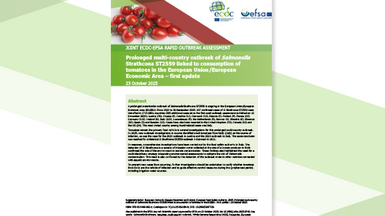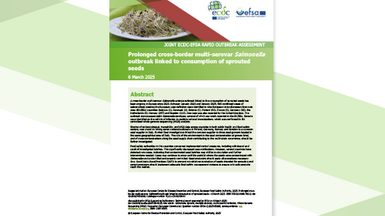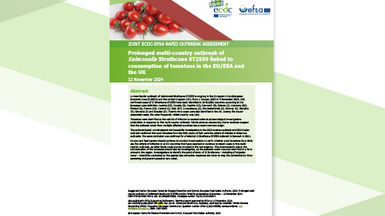Rapid risk assessment: Multi-country outbreak of Salmonella Stanley infections
Following an increase in the number of reported human infections with Salmonella entrica serovar Stanley in some EU countries, the European Commission requested a risk assessment from ECDC.
It concludes that the emergence of cases in three EU countries (Belgium, Germany and Hungary) without documented travel history outside the EU in the same period of time and with a specific age distribution, common antibiotic-resistance profile and PFGE pattern confirms an epidemiological and microbiological link.
These cases are not considered to be related to international travel but the source has not yet been identified. Investigations are ongoing and it is likely that more cases will be identified. However, the impact on public health across the EU is considered to be limited.
Executive Summary
Up to 26 July 2012, 60 Salmonella Stanley cases (32 from Hungary, 20 from Belgium, eight from Germany) with an indistinguishable PFGE pattern were reported from EU/EEA countries.
Although most Salmonella Stanley cases are related to travel to south-east Asia, the increase of infections reported in three EU countries in 2012 is not related to international travel. The occurrence of one single PFGE pattern of strains isolated from different countries suggests in fact a common source, which has not yet been identified; potential vehicles might be food, feed, or contact. Investigations are ongoing and it is likely that more cases will be identified. However, the impact on public health across the EU is considered to be limited.
Member States are encouraged to perform PFGE testing on all recent isolates of Salmonella Stanley to increase the possibility of identifying potential vehicles of infection. ECDC will continue to closely monitor this event and will update the risk assessment as soon as new relevant information becomes available.







